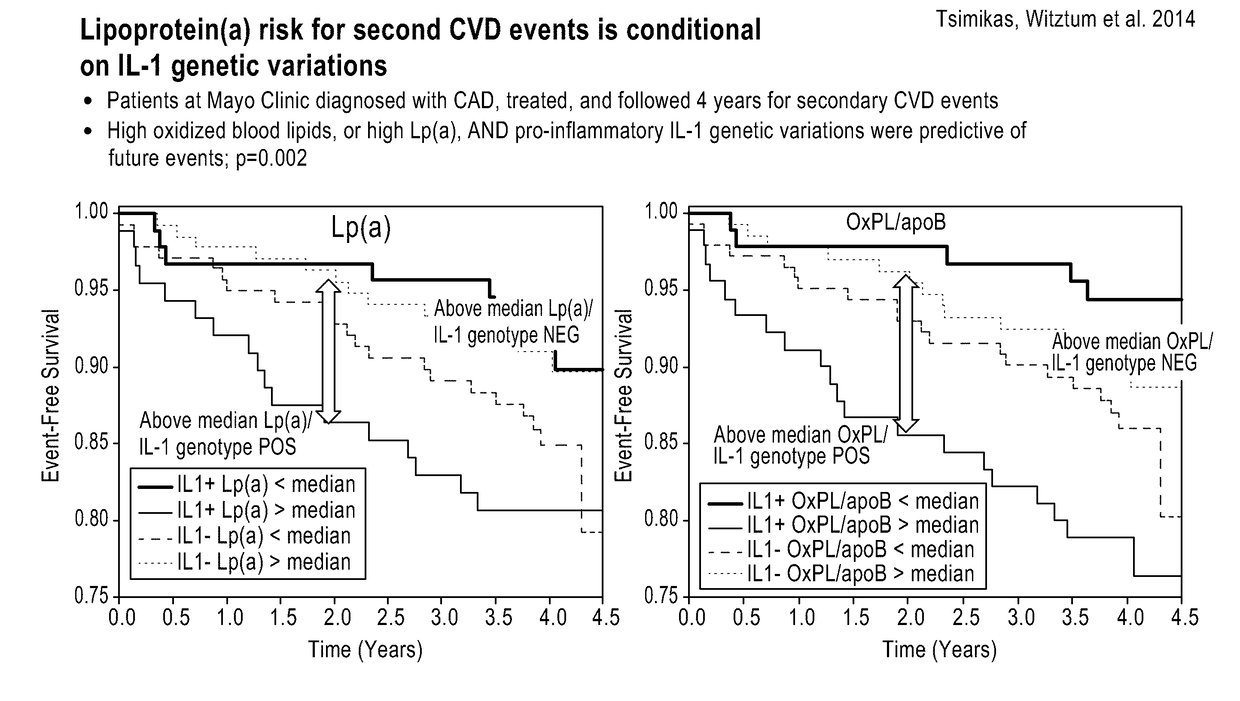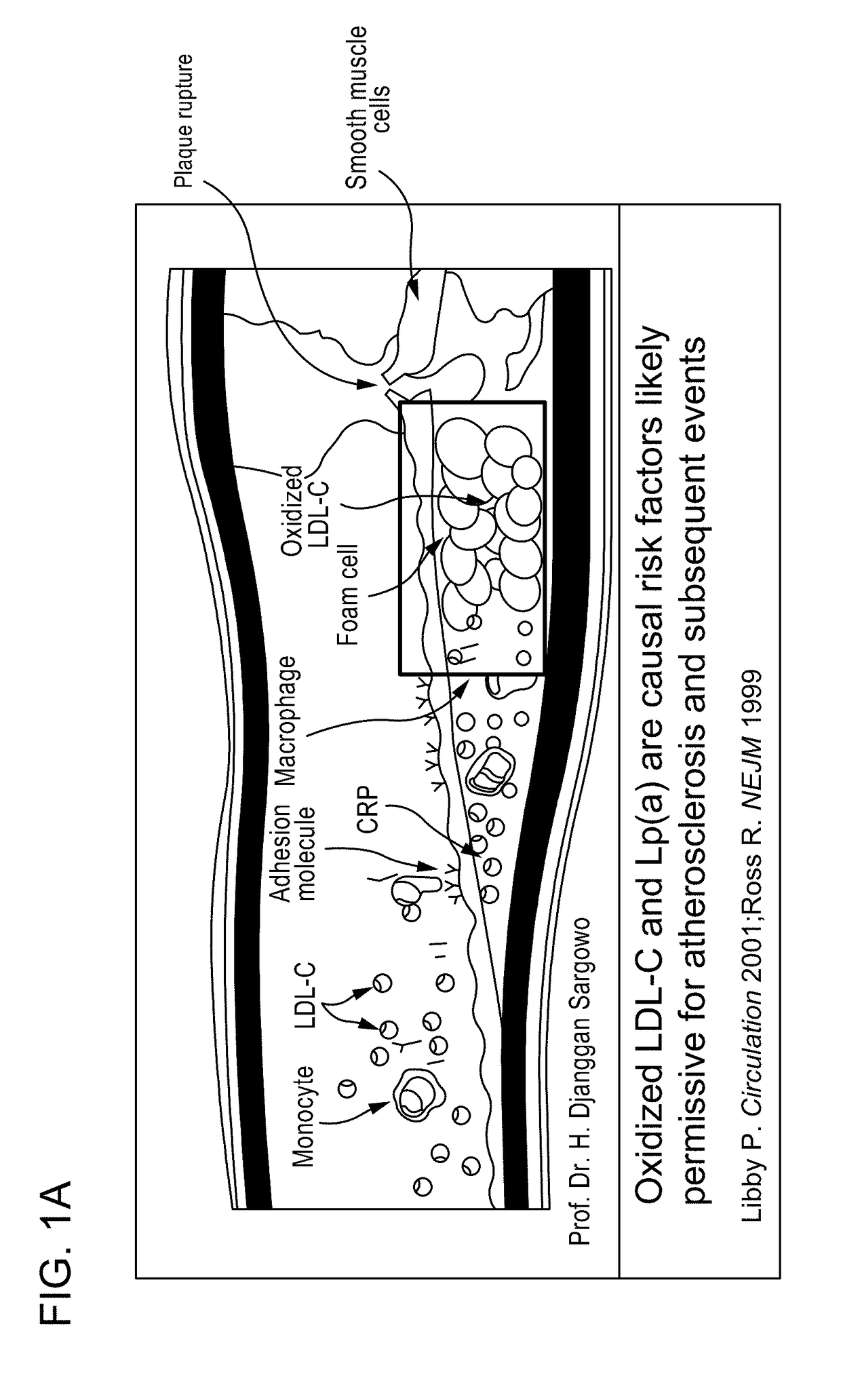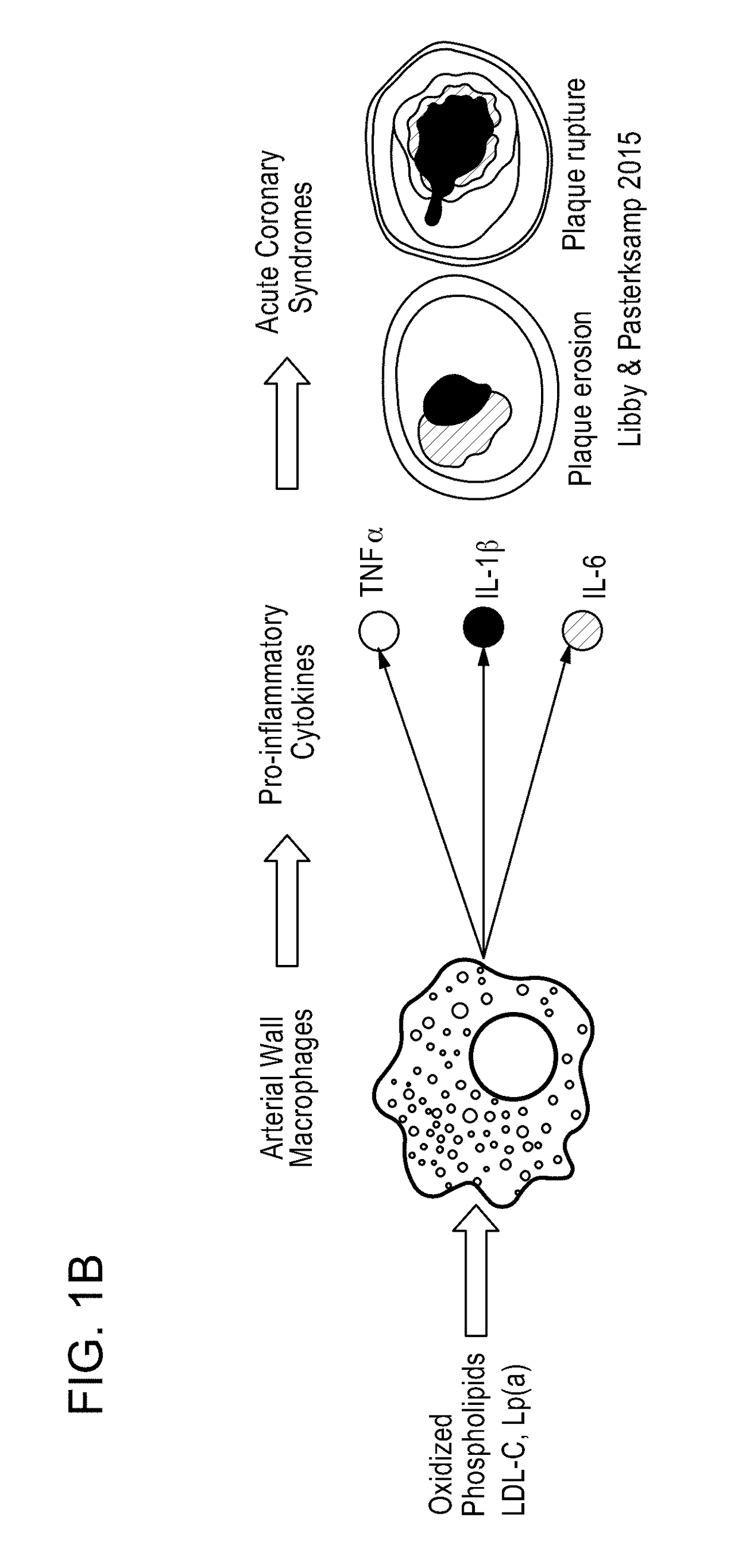Methods and kits for treating cardiovascular disease
a cardiovascular disease and kit technology, applied in the field of methods and kits for treating cardiovascular disease, can solve the problems of ineffective statins in preventing recurrent cv events, susceptible to first or second recurrent cv events, etc., and achieve optimal treatment or preventative regimens, increase monitoring, and aggressive
- Summary
- Abstract
- Description
- Claims
- Application Information
AI Technical Summary
Benefits of technology
Problems solved by technology
Method used
Image
Examples
example 1
General Methods
[0186]Study Population
[0187]This study enrolled 603 consecutive patients undergoing a diagnostic coronary angiography based on clinical suspicion of coronary artery disease at the 2nd Department of Cardiology in the University Hospital of Ioannina and the Catheterization Laboratory of 1st IKA Hospital in Athens, from January 2010 to December 2012. Patients were between 18 years to 90 years at entry (index coronary angiography) and of both genders. Patients with a history of any coronary revascularization procedure, severe valvular disease, congenital heart disease, cardiomyopathies as well as those on hemodialysis were excluded. Additionally, patients with diabetes mellitus were excluded to be able to compare to prior studies1,2 where such patients were excluded, since they are very high risk group that may mask other underlying relationships.
[0188]Study Design
[0189]The study was prospectively designed to test the association of CAD with pro-inflammatory and pro-throm...
example 2
Characteristics of the Study Group
[0204]The baseline characteristics of the 603 patients, separated by IL1 status, are presented in Table 8. The total cohort had a mean age of 63±11 and was 71% male. 390 patients (65%) were IL-1(+), typical of prior data in Caucasian populations. Cardiovascular risk factors were prevalent and included current smoking (41%), hypertension (73%), hypercholesterolemia (78%), and family history of CAD (33%). The baseline use of anti-platelet agents and statins was 31% and 42%, respectively. The indication for angiography was acute coronary syndrome in 19% and suspected CAD in 81% of patients. Mean LDL-C was 126±40 mg / dL, median (IQR) Lp(a) was 9.2 (4.4, 20.9) mg / dl and median (IQR) OxPL-apoB was 12.5 (8.1, 14.0). The baseline characteristics were not significantly different between IL1(+) and IL1(−) groups, except for family history, total cholesterol and LDL-C being higher in the IL1(−) group. Also, the baseline characteristics were similar between pati...
example 3
hip of Lp(a) and OxPL-apoB and for Angiographically-Determined CAD
[0206]The number (%) of patients with no CAD was 265(44%), and non-significant CAD was 51 (9%). Among the 287 (47%) with CAD, the distribution of 1-vessel, 2-vessels and 3-vessels were as follows: 316(53%), 183(30%), 84 (14%) and 20 (3%), respectively.
[0207]Analysis by Lp(a) quartiles revealed a linear, significant relationship between increasing levels of Lp(a) and OR for angiographically determined CAD in IL1(+) patients ≤60 years old, reaching an OR (95% CI) of 2.90 (1.07-7.86) (p=0.036) for quartile 4 versus quartile 1 (Table 9). In contrast, no significant differences were noted in IL1(−) patients or in patients >60 years old.
[0208]Analysis by OxPL-apoB quartiles revealed similar trends, but with borderline non-significance, for angiographically determined CAD in IL1(+) patients ≤60 years of age, reaching an OR (95% CI) of 2.29 (0.72-7.31) (p=0.056 for quartile 4 versus quartile 1 (Table 10).
[0209]In patients ≤60...
PUM
| Property | Measurement | Unit |
|---|---|---|
| concentration | aaaaa | aaaaa |
| concentration | aaaaa | aaaaa |
| density | aaaaa | aaaaa |
Abstract
Description
Claims
Application Information
 Login to View More
Login to View More - R&D
- Intellectual Property
- Life Sciences
- Materials
- Tech Scout
- Unparalleled Data Quality
- Higher Quality Content
- 60% Fewer Hallucinations
Browse by: Latest US Patents, China's latest patents, Technical Efficacy Thesaurus, Application Domain, Technology Topic, Popular Technical Reports.
© 2025 PatSnap. All rights reserved.Legal|Privacy policy|Modern Slavery Act Transparency Statement|Sitemap|About US| Contact US: help@patsnap.com



